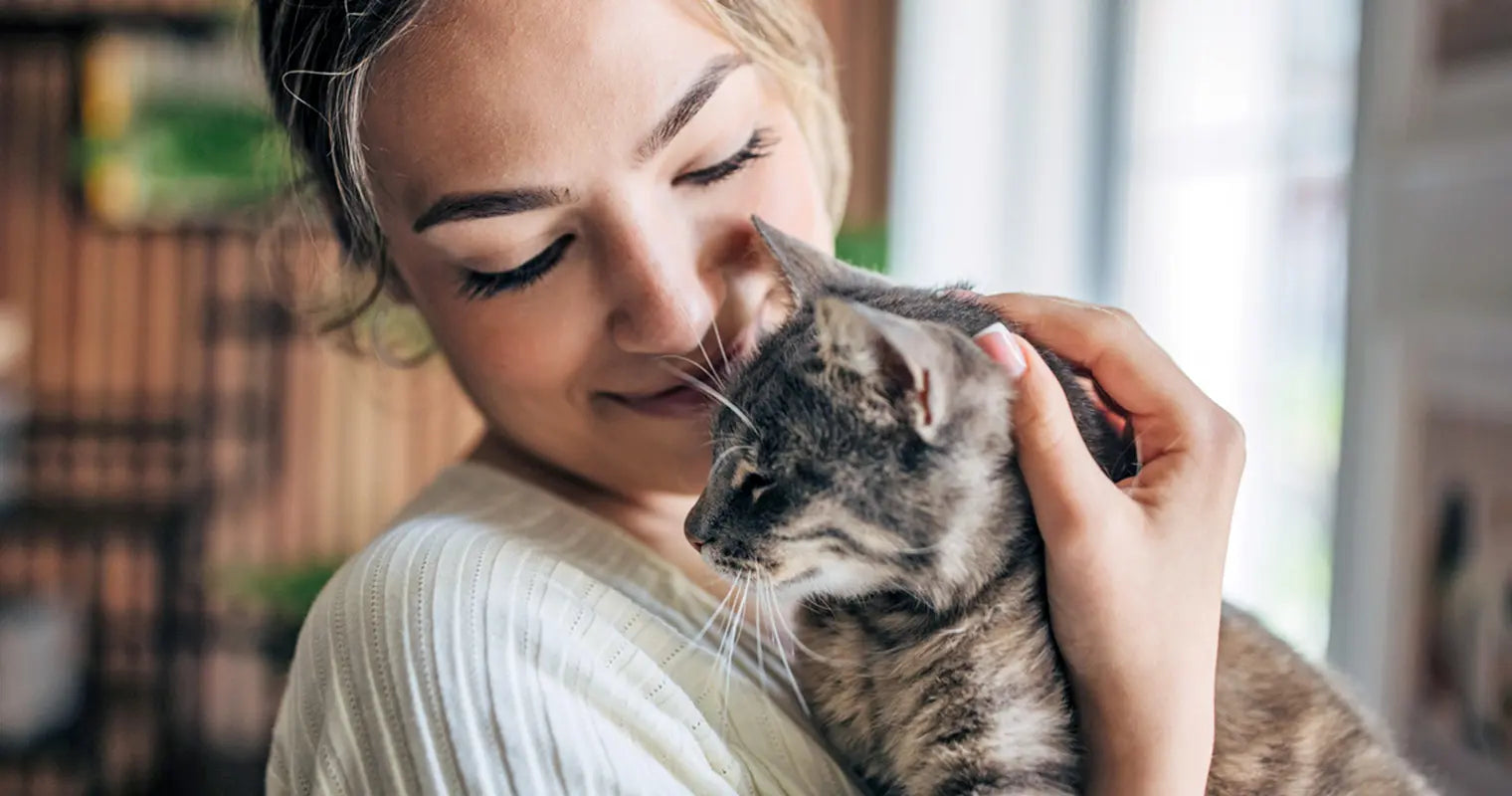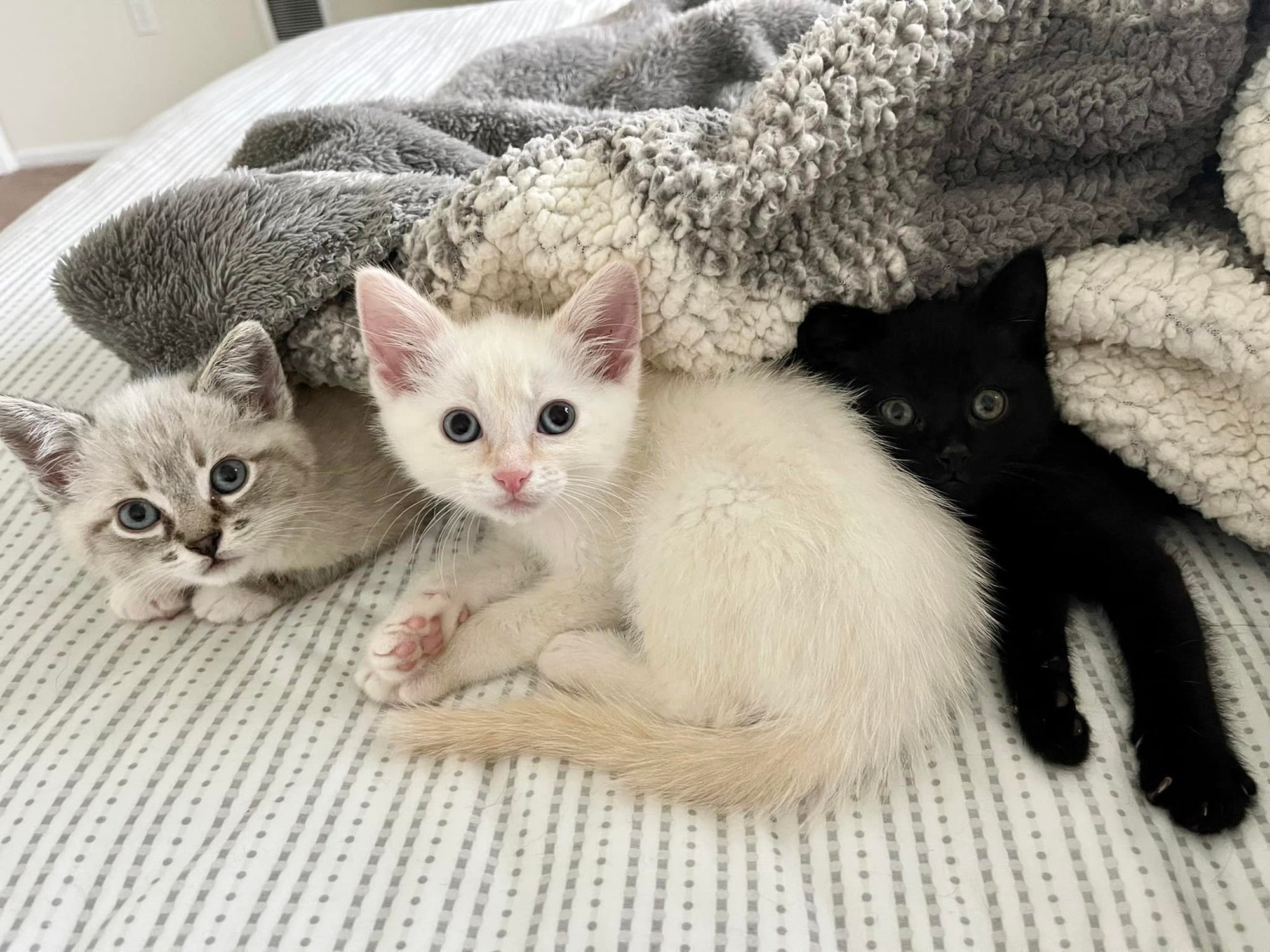Learn how to identify, treat, and prevent ringworm in kittens.
Ringworm is one of the most common skin issues affecting kittens (and cats) worldwide. Despite its name, ringworm has nothing to do with worms (phew!). It’s a fungal infection that can affect both humans and animals.
Although discovering that a kitten in your care has ringworm can be alarming and concerning, the good news is that effective treatments are readily available.
We spoke with both an animal rescue and a veterinarian to get valuable information on how to treat this fungal infection in shelter environments and at home. Additionally, we learned about innovative treatment options on the horizon that could significantly improve how ringworm is managed among shelter cats.
What is ringworm?
“Ringworm is a highly transmissible fungal infection that can quickly spread among a shelter population,” says Brandon Macz, spokesperson for Seattle Humane. “We see ringworm frequently in cats and dogs coming from more rural areas.” It’s caused by a group of fungi known as dermatophytes. In cats and kittens, the dermatophytes that cause a ringworm infection are called Microsporum canis.
While treating ringworm is straightforward, it often means shelter pets need to stay at the shelter longer until they recover. This requires more resources and can decrease the shelter’s capacity, Macz explains. Fortunately, Seattle Humane has an isolation ward that allows them to treat pets with ringworm safely, preventing the spread to other shelter animals. Macz points out that many other shelters lack such facilities, and sadly, some may resort to euthanizing infected pets.
Treating kittens and cats at home is easier, because there is less risk of the infection spreading to other animals. But care must still be taken if you have other pets.
How do cats get ringworm?
Ringworm spreads by direct contact with the fungus. The spores responsible for ringworm thrive on the outer layers of animal skin and hair, so the fungus can easily spread if your cat comes into direct contact with an infected animal.
The spores can also live for months on surfaces such as floors, furniture, bedding, soil, litter, grooming tools, and toys. If your cat comes into contact with these contaminated items, they can pick up the spores.
And it’s not just your cat who’s at risk: Ringworm is zoonotic, meaning it can jump between animals and people. While ringworm can be bothersome and serious, it’s rarely fatal and is treatable with proper care and attention.
If left untreated, the affected cat’s skin may become exposed due to hair loss, making them more susceptible to skin wounds and additional infections. Taking quick action keeps the cat healthy and prevents the infection from spreading to other animals and people.
It’s important to note that ringworm is much more common in kittens. This is because young cats (under a year old) are more susceptible to the infection because their immune systems are not fully developed. But adult cats get ringworm, too, especially those with longer fur.
How do I know if my cat has ringworm?
While each cat may show different symptoms, there are several telltale signs that your cat is dealing with a ringworm infection.
Symptoms of ringworm in cats
-
Circular patches of hair loss: These often appear on the face, ears, tail, or paws.
-
Scaly or crusty skin: You might notice flaky or rough skin on the affected areas, resembling dandruff.
-
Red, round lesions: In some cases, lesions might appear as red, raised rings (hence the name “ringworm”).
-
Excessive scratching or grooming: Cats with ringworm may itch and groom the affected areas more than usual.
-
Broken or brittle hair: Ringworm can weaken the hair shaft, leading to broken hairs that look dull and uneven around the affected spots.
-
Infected claws or nail bed: You might see redness, swelling, or discoloration around your cat’s claws and nail beds. In some cases, the nails can become brittle or even fall off due to the infection.
How to treat ringworm in cats
Whether treating a kitten in a home or one in a shelter, the treatment for ringworm is the same, involving medical treatments, isolation, and thorough cleaning of their environment. Treatment usually takes around four to six weeks, but some cases may take longer. Here’s a comprehensive guide to help you effectively tackle this infection.
Confirm the diagnosis
Before starting any treatment, it’s important to have a veterinarian confirm the diagnosis. This is done through a physical exam, microscopic evaluation, and/or fungal culture. Vets may also use a special type of ultraviolet lamp, called a Wood’s lamp. In some cases, the infected areas will glow under this light, indicating the presence of the fungus.
Once confirmed, the vet will recommend the most appropriate treatment based on the severity of the infection and the overall health of the cat.
Medical treatments
The following medical treatments are commonly prescribed.
-
Antifungal creams: Topical antifungal creams that contain miconazole or clotrimazole are applied directly to the affected areas.
-
Oral antifungal medications: Oral antifungal medications, such as terbinafine, are often used in conjunction with topical treatment. These medications work to stop the reproduction and spread of the fungal infection.
-
Lime sulfur dip: Made of sulfur and lime, this solution effectively kills the fungi responsible for the infection. After diluting the dip with water, it’s applied to the cat’s affected skin and fur, then allowed to dry completely. Dips are usually done twice a week.
Important notes:
-
Always wear long sleeves and gloves when handling a kitten with ringworm or applying medication to the affected areas. And always wash your hands afterward.
-
After applying the lime sulfur dip, keep the kitten warm while the mixture dries. You can use a pet-approved heating pad, such as a K+H Animal Heating Pad, placed under a blanket to maintain their body temperature. This is because kittens cannot regulate their body heat effectively and can easily develop hypothermia if they get too cold. This also applies if you ever have to bath your kitten, too.
Isolation of the affected kitten
To prevent spread, keep the infected kitten isolated from other pets and humans as much as possible until the infection is fully resolved. Also, be sure to use separate grooming tools and toys, and disinfect them thoroughly after each use.
Environmental management
-
Thorough cleaning: Clean and disinfect all areas the kitten frequently touches, including bedding, toys, grooming tools, and furniture.
-
Vacuum and wash: Vacuum carpets and upholstered furniture to remove spores, and wash any items you can in hot water for disinfection.
-
Discard when necessary: In severe cases, disposing of items that cannot be adequately cleaned may be necessary.
-
Brushing: Macz says that at Seattle Humane, shelter attendants brush the infected kittens’ fur to remove fungal cultures.
Testing new ringworm treatments for shelter cats
“Lime sulfur topical treatment is effective, but it also has a very unpleasant odor similar to rotten eggs, and it can stain surfaces a sickly yellow,” Macz says. These drawbacks can discourage fosters and adopters from taking in cats with ringworm, highlighting the need for new (less stinky) treatment options.
With that in mind, Seattle Humane took part in a study, led by Dr. Lena DeTar, DVM, DACVPM, DABVP-SMP, Associate Clinical Professor of Shelter Medicine at Cornell University College of Veterinary Medicine. “Our study looked at three topical treatments: miconazole chlorhexidine shampoo, hydrogen peroxide shampoo, and lime sulfur,” Dr. DeTar says. The study’s goal was to determine whether hydrogen peroxide-based shampoos or miconazole-chlorhexidine shampoos are effective alternatives to lime sulfur treatment of ringworm in shelter cats, Macz adds.
Although the results haven’t been published yet, they look promising. Dr. DeTar notes that the standard treatments — lime sulfur dips and terbinafine oral medications — will likely remain popular because they’re affordable and effective. However, having alternative options is important. If the two new topical treatments being tested prove successful, this could lead to a more pleasant treatment experience. The improvement might encourage more fosters and adopters to take in cats with ringworm, helping more cats find loving homes.
Ringworm prevention strategies for kittens
Keeping your kitten or cat healthy and ringworm-free involves a combination of good hygiene practices, regular veterinary care, and a safe living environment. Here are some effective strategies to help prevent ringworm from occurring or recurring.
Maintain a clean environment
Regularly clean and disinfect your kitten’s living areas, including bedding, toys, and scratching posts. Vacuum carpets and upholstered furniture to remove hidden spores. Wash any items you can in hot water to disinfect and minimize the risk of reinfection.
Do skin checks
Learn to recognize the early signs of ringworm so you can act quickly if your kitten shows any symptoms.
Make regular veterinary check-ups
Kittens should visit the vet every three to four weeks during their first 16 to 20 weeks of life. After that, annual wellness exams are recommended. These regular check-ups help your vet identify early signs of ringworm (and other health issues) and start treatment promptly if needed.
Support a strong immune system
Feed your kitten a balanced, nutritious diet to support their immune system, making them less vulnerable to infections like ringworm. Additionally, provide a calm environment, because stress can weaken your kitten’s immune defenses, increasing their susceptibility to fungal infections.
Quarantine new pets
When introducing a new kitten to your household, keep them separate for a short period to monitor them for any signs of infections before allowing them to mingle with other pets.
Commonly asked questions
Can you get ringworms from cats?
Yes, ringworm is zoonotic, meaning it can spread from cats to humans. Always practice good hygiene, like washing your hands after handling your cat, especially if they show symptoms.
Should I adopt a cat that has ringworm?
Adopting a cat with ringworm is a great choice, as long as you’re willing and prepared to treat the infection. Not only will you be giving the cat a much-needed home, but you’ll also be helping the shelter control the spread of ringworm and helping reduce shelter overpopulation.
Is ringworm common in shelters?
Yes, ringworm is common in shelters due to the close quarters and high turnover of animals. Shelters work diligently to treat affected cats promptly to prevent outbreaks and protect all residents.
Is there a vaccine for ringworm in cats?
There is a vaccine for ringworm in cats, but it’s not recommended by veterinary professionals due to its ineffectiveness.





